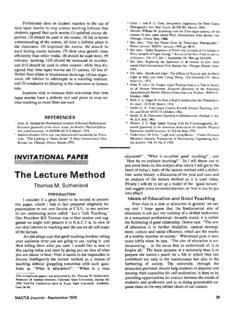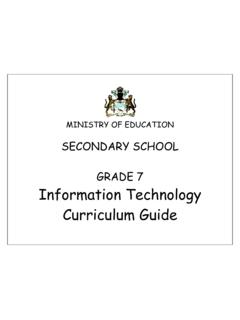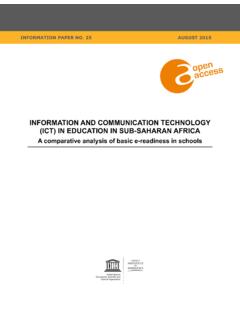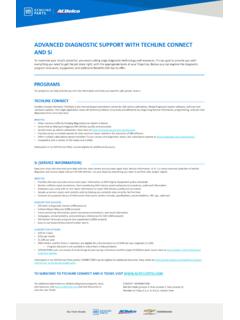Transcription of Using Connectivism Theory in the Classroom
1 Using Connectivism Theory in the Classroom Introduction There has been much debate over whether Connectivism is a learning Theory or an instructional Theory . Regardless of a person s conclusion on the matter, it s clear that technology has changed how we learn in the Classroom as well as outside of the Classroom . Connectivism is defined as actionable knowledge, where an understanding of where to find knowledge may be more important than answering how or what that knowledge encompasses (Duke, Harper, and Johnston, 2013, p. 7). Connectivism provides insight into learning skills and tasks that are needed for learners to flourish in a digital era (Siemens, 2005, p. 7). So, what does Connectivism look like in the Classroom ?
2 From a learner-centered teaching perspective, Connectivism provides opportunities for students to make choices about their learning. Connectivism promotes group collaboration and discussion, allowing for different viewpoints and perspectives to aid in problem-solving, decision-making, and making sense of information. The following is a basic lesson based on Connectivism in a higher education technology lab course. For this example, the undergraduate students are preparing to become secondary agriculture education teachers. This lesson demonstrates how the future educators can integrate technology into a demonstration of learning about controversial agriculture issues. Objective Create a transmedia message about a controversial agriculture issue.
3 Teacher directions Students will break into groups of three or four. Student groups will each research a relatively controversial subject or issue within the area of agriculture. One student will create a PowerPoint or Prezi to present background information on the chosen issue. Another student will present a positive viewpoint of the issue Using a blogging platform such as Blogster. A third student will use a different blogging platform of their choice to share an opposing view on the subject. The fourth student will create a public service announcement on the issue Using IMovie or another similar technology . After each learner completes their media message, the group members will collaborate and create a class presentation Using all their media platforms.
4 Students will share their presentations to the whole class and answer questions regarding their issue. For a little competition, the teacher can use Edmodo to send a poll to all their students to vote on which group they feel created the best presentation. Students cannot vote for their own group presentation. Bonus points can be awarded to each member of the winning group. As a final reflection, students can write about what they did and how the lesson helped them gain an understanding of agriculture related issues. This lesson with the use of technology will require engagement and active participation on the part of the learners. As they take ownership of the project, students will be creating, researching and analyzing, all of which are actions in the higher levels of Bloom s Taxonomy.
5 Although technology can be a great learning tool, there is no substitute for the guidance and mentoring of an educator. Students need teachers to help them internalize concepts and help them apply their new knowledge to real world experiences (Duke et al., 2013). By educating future agriculture leaders today, they will be empowered and feel competent to share agriculture messages Using multiple media platforms. References Duke, B., G. Harper and M. Johnston. 2013. Connectivism as a digital age learning Theory . [Special issue]. The International HETL Review 4-13. Siemens, G. 2005. Connectivism : A learning Theory for the digital age. International Journal of Instructional technology & Distance Learning 2(1).
6 Submitted by: Pamela Rank Iowa State University Ames, IA







